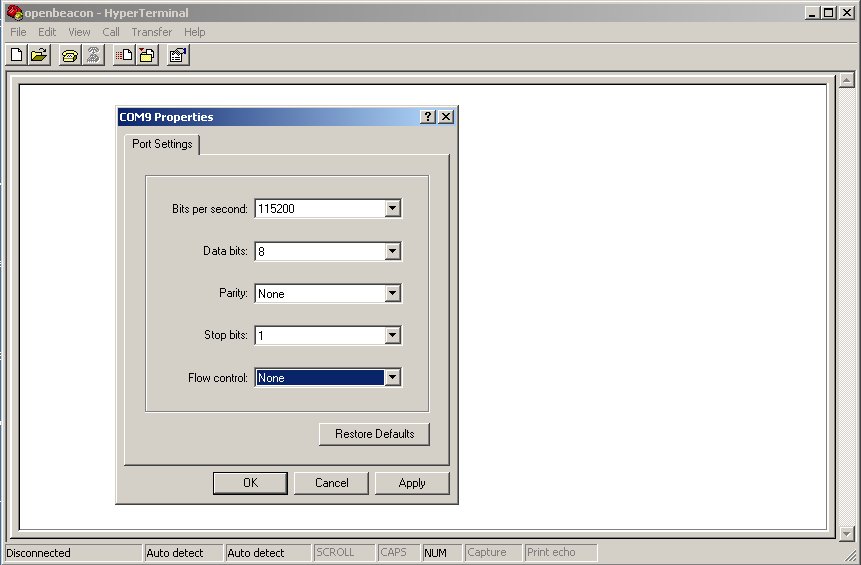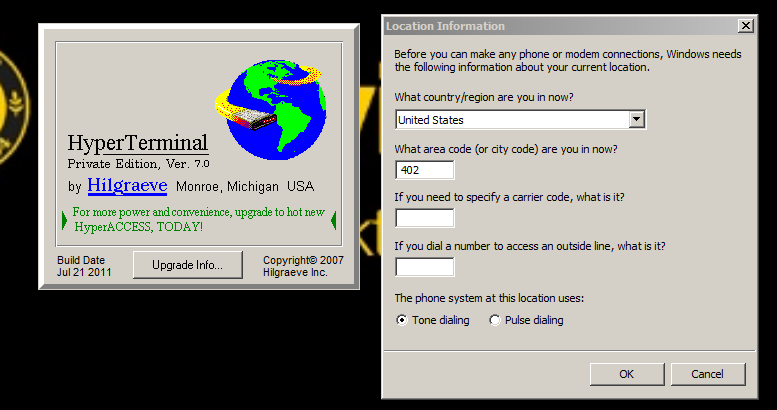

- #Hyperterm application serial
- #Hyperterm application code
- #Hyperterm application download
- #Hyperterm application mac
So for example, to change the default theme, you would open up your ~/.hyperterm.js file.Īnd then reload hyperterm to pick up the new configuration by pressing ( Cmd+Shift+R) or by clicking View -> Reload. All the plugins that Hyperterm uses are just npm modules, so can be installed and managed via npm. The process of changing themes or adding additional functionality is pretty straight forward. The docs are a great resource for learning more about customization and configuration. Hyperterm uses its own configuration file to extend the basic functionality. The real power though, comes from the flexibility and design of the plugin system and configuration files which makes customization really easy to get going with and really powerful. The stock Hyperterm is definitely usable. Just fire up Hyperterm and you are good to go. Once that is done and you go through the installation process you are ready to get started.

#Hyperterm application download
To get started, head over to the official Hyperterm website and download the latest release. If you know javascript, you can already start hacking on the look and feel of Hyperterm, the Chromium browser tools are literally built into it (cmd+option+i). Obviously this is a win because you can port your configuration to different platforms and don’t need to reconfigure anything, and can also store your configuration in source control so that if your machine ever dies or you get a new one, you have a nice place to pick things up again, which is pretty slick.

#Hyperterm application mac
Since Hyperterm is built on top of node (via Electron) it is by default cross platform so works on Mac and Linux and Windows soon. For those who don’t know, Hyperterm is based on the electron project which leverages nodejs to build desktop applications that are cross platform.Īt its simplest, Hyperterm is a drop in replacement for other shells, like iterm2 or the default terminal app that comes packaged with most OS’s. Basically, Hyperterm allows for a wide variety of customization and extension to be added to the terminal, yet doesn’t add extra bloat and keeps things fast. RS-232 and RS-485 protocols.If you haven’t heard about it yet, Hyperterm (not to be confused with hyperterminal) is a cool new project that brings javascript to the terminal.
#Hyperterm application serial
To access the RS232 related information use the menu command Help | Help Topics | Communication | Protocols and then select Serial communication. The on line help of EasyMotion Studio contains the information about how the TML instructions are encapsulated in RS232 messages.

Use Transfer | Send text file… to point to the *. Configure the Hyper Terminal as showed aboveĭ. – press the > to generate the message: 04 0F F0 00 02 05 (see the picture below).ī.
#Hyperterm application code
– write in Source Code the instruction AXISOFF Sending the TML instruction AXISOFF to the drive with axis ID 255: It is advisable to include only one command in the *.txt file, otherwise the messages will be sent without waiting for the acknowledge message from the drive, which can lead to communication errors. If the instruction is sent successfully, you will see the character “O” in the HyperTerminal. In HyperTerminal use the menu command Transfer | Send text file… to send the instruction previously written in the *.txt fileĥ. without first using EasyMotion Studio to communicate, then set the baud rate to 9600 (drive default).Ĥ. If you want to send commands after the drive is powered up, i.e. The baud rate used by EasyMotion Studio can be viewed/changed from the Communication Setup dialogue, opened with the menu command Communication | Setup. Therefore, Hyperterminal must be configured to use the same baud rate as EasyMotion Studio. If you previously communicated with the drive using the EasyMotion Studio, for example to program the motion, the drive baud rate is changed by EasyMotion Studio (usually to the highest speed, 115200). – Bits per second: 9600 (default communication speed of the drive after power-on / reset) Configure the HyperTerminal to communicate using the appropriate serial communication port of your PC, for example COM1. Write the hexadecimal values generated by the Binary Code Viewer.Ī good hex editor can be downloaded from (free edition).ģ. The file must be edited using an HEX editor. Create a text file (*.txt) with the data to be sent by the HyperTerminal. – press the > button to generate the RS232 message contents (see the example below).Ģ. – set the Destination axis ID of your drive For RS232 the host axis ID is identical with the drive axis ID – fill the Source Code field with the TML instruction to be sent Start EasyMotion Studio and use the menu command Application | Binary Code Viewer to open the Binary Code Viewer tool. To send a TML instruction using HyperTerminal follow the next steps:ġ.


 0 kommentar(er)
0 kommentar(er)
